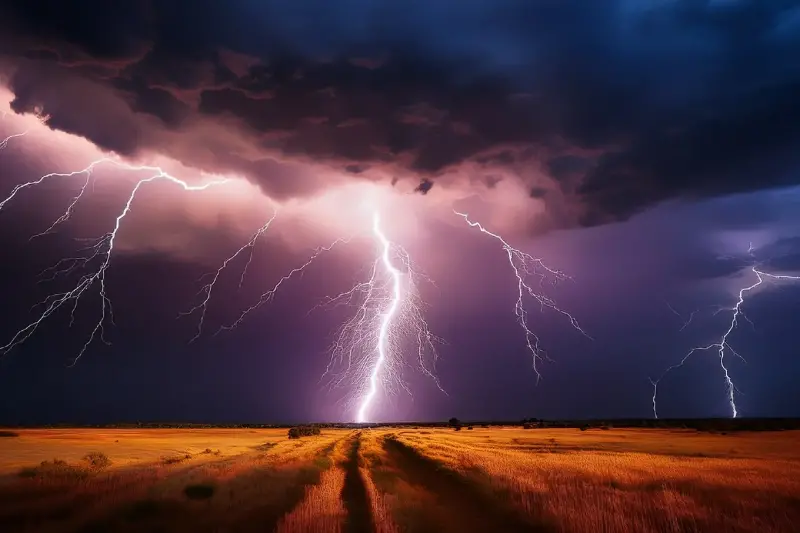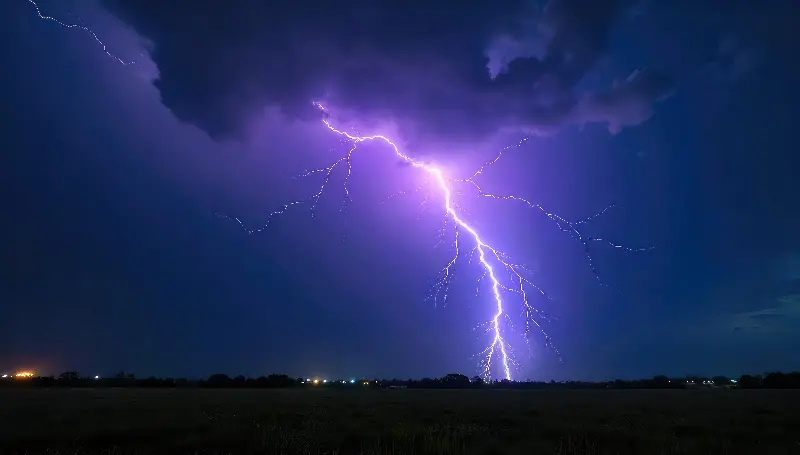Few sounds in nature capture our attention quite like the rolling drumbeat of thunder. Whether you're a child counting seconds between lightning and the rumble that follows, or an adult caught off-guard by a surprise storm, thunder’s mighty voice commands respect. Yet, while most of us know thunder follows lightning, the true science behind this dramatic event is less widely understood. Let's embark on a journey through stormy skies, electric forces, and high-speed shockwaves to explore how thunder really forms—and why its story is even more thrilling than you might imagine.

The Birth Of A Storm Cloud
Every thunderstorm begins with a meeting of heat and moisture. Picture the warm ground on a sun-drenched afternoon: as sunlight bakes the earth, it warms the air and evaporates moisture from soil, rivers, and plants. This moisture-laden air rises into the atmosphere. As it ascends, the temperature drops, forcing the water vapour to condense into countless tiny droplets. When enough of these droplets gather, they create the billowing, majestic cumulonimbus clouds—nature’s very own power stations.
Inside these clouds, chaos reigns. Updrafts and downdrafts churn and swirl, tossing water droplets and ice crystals into a frenzied ballet. This dance is more than beautiful; it’s electrifying. As particles collide, electrons are knocked loose, building immense electrical charges within different parts of the cloud.
The Lightning Connection
Thunder is, at its heart, the child of lightning. As oppositely charged regions within a storm cloud—and between clouds and the ground—grow ever more polarised, the potential difference becomes enormous, sometimes exceeding 100 million volts. Eventually, this energy demands release, and a lightning bolt erupts, instantly heating the air in its path to temperatures as high as 30,000 degrees Celsius—hotter than the surface of the sun.
This nearly unimaginable heat causes the air to expand explosively. Imagine air rushing outward at supersonic speeds, generating a shockwave that races through the atmosphere. That shockwave, as it moves and dissipates, is what we hear as thunder. The louder and longer the thunder, the closer and more powerful the lightning was.

Why Thunder Rumbles, Rolls, And Booms
Thunder isn’t a simple, single sound. It’s a complex symphony of rumbles, cracks, booms, and growls. But why? The key lies in the winding journey of sound.
Sound travels slower than light—around 343 metres per second compared to light’s staggering 299,792 kilometres per second. When a lightning bolt slices through the sky, you see the flash almost immediately, but the resulting thunder arrives seconds later. The time delay gives you a rough estimate of distance: every three seconds between flash and rumble means the storm is about one kilometre away.
The thunder’s character depends on your position and the storm’s structure. If you are close to the lightning, a sharp clap or bang may startle you. Further away, the sound softens and rolls, bouncing between clouds and landscapes, creating the thunder’s familiar extended growl. This stretching effect is caused by the length of the lightning bolt—sometimes several kilometres long—where different segments of the bolt generate soundwaves that reach your ears at slightly different times.
Unusual Thunder Phenomena
Perhaps you’ve heard of “anvil thunder”. This phenomenon occurs when sound waves are trapped beneath the flat top of a particularly large cumulonimbus cloud, travelling great distances and arriving minutes after the lightning. Thunder can also interact with urban environments; tall buildings and cityscapes can echo and amplify the rumbles, creating a dramatic acoustic effect.
Then there’s the mysterious phenomenon called “superbolt” thunder. Rare and immense, superbolts are lightning strikes with up to 1000 times more energy than average, producing thunderous reports that have reportedly shattered windows and shaken buildings.
Sonic Booms And Thunder: A Surprising Parallel
If you’ve ever witnessed a supersonic jet streaking across the sky, you might be surprised to learn that the violent bang of thunder is a cousin to the sonic boom. Both occur when something moves faster than the speed of sound in air. For an aircraft, that’s its own velocity; for thunder, it’s the instantaneous expansion of air in the wake of a lightning strike. Both create shockwaves, but thunder’s is produced purely by nature—no advanced aviation required.
There’s also an extra twist: under perfect conditions, especially on flat, open plains, you might hear “double thunder.” This rare effect happens when soundwaves bounce off temperature layers in the atmosphere, making a single lightning bolt’s thunder reach you more than once.
The Universal Appeal Of Thunder
Beyond the science, thunder has a magical quality that has fascinated people for ages. Ancient Greeks believed it was the work of Zeus, while Norse mythology credits Thor and his mighty hammer. Even today, thunder’s primal power often sparks awe and inspiration.
But now, when you next hear that distant rumble or crackling boom, you’ll know you’re witnessing one of nature’s most spectacular performances—a dance of heat and moisture, electricity and sound, physics and wonder. Whether you revel in it or retreat indoors at the first sign of a storm, thunder is a vivid reminder of the universe’s astonishing forces unfolding right above our heads.
